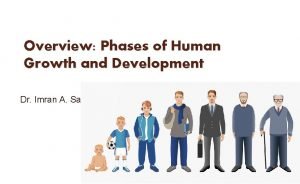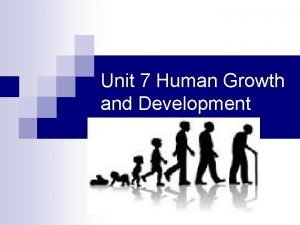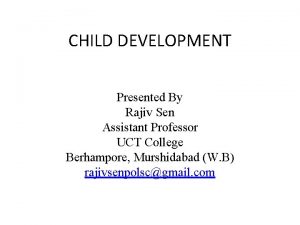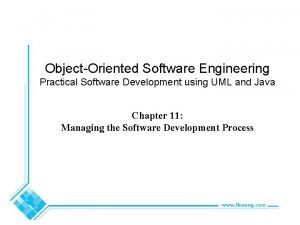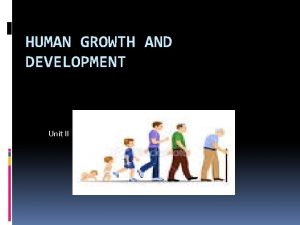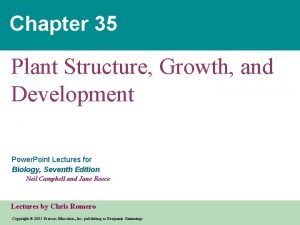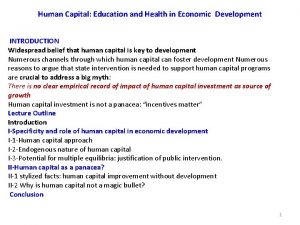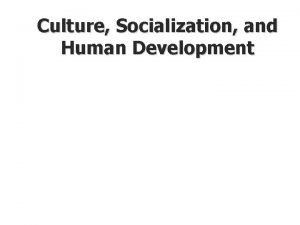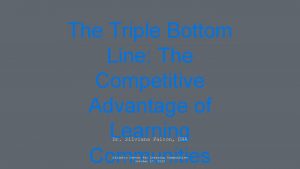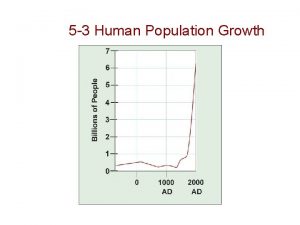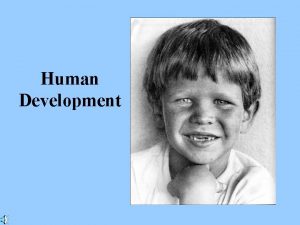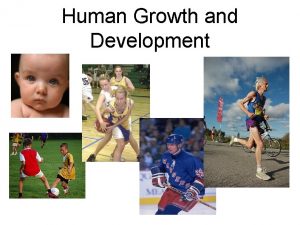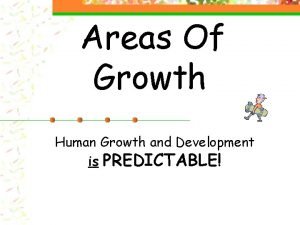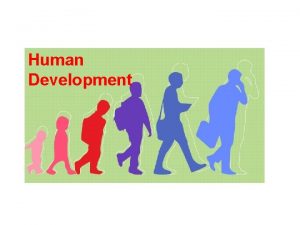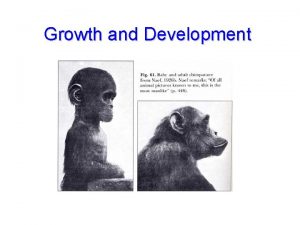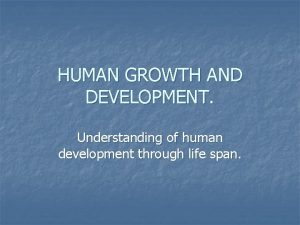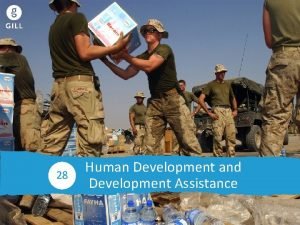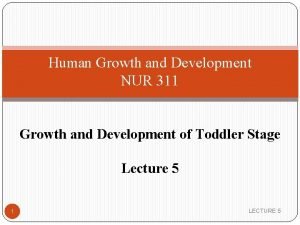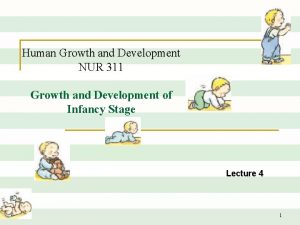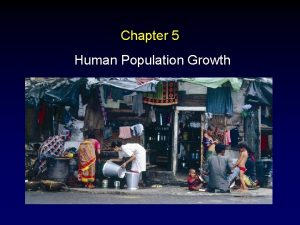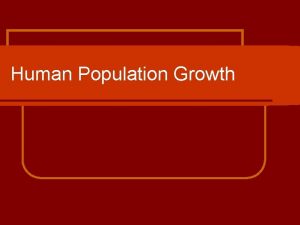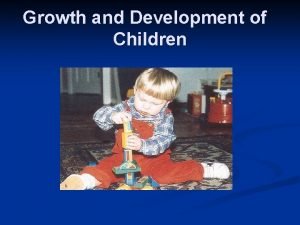Areas Of Growth Human Growth and Development is



























































- Slides: 59

Areas Of Growth Human Growth and Development is PREDICTABLE!

EACH TEENAGER: *IS AN INDIVIDUAL *UNIQUE PERSONALITY *SPECIAL INTERESTS *LIKES AND DISLIKES.

1 - Chronological 2 – Physical 3 – Intellectual 4 – Emotional 5 – Social 6 - Philosophical

1 - CHRONOLOGICAL when you reach a certain AGE…. . and by • is law something is legal to do.

It’s your birthday! • Happy Birthday! Birthday

Some examples of chronological growth are… n 21 • n 18 • n 5 • n 12/10 • n 16 • Drinking Alcohol Voting Tattoo Kindergarten Hunting license Driving w/out parent consent

…more examples… • • n 17 • n 13 • n 12/14 • n 16 • n 14 • n 18 • n 12 Speedboat 30 HP+ “R” movie “Pg 13” movie w/out parents Snowmobile Fishing license Jet Skiing, alone Tobacco Other? President, enlistment, sr. discounts, talking on cell phone while driving….

1 - Chronological 2 – Physical 3 4 5 6 – Intellectual – Emotional – Social - Philosophical

“Adolescents”…… • ……. a stage of development between childhood and adulthood.

Puberty signals the beginning of Adolescence.

“Puberty”…… • …. is the part of adolescence when the reproductive system becomes mature.

Puberty…. . • It is unpredictable as to EXACTLY when it will occur…. . BUT, • Puberty will eventually happen.

A HORMONE is … • . . a chemical made in one part of the body > >>> • carried in the bloodstream>>>> • causing a change in another part of the body. • HORMONES that cause sexual maturity are called sex hormones ex: testosterone (male), progesterone (female) Pituitary Gland = stimulates the ovaries and testes to release hormones.

Awkwardness /Growth Spurts • Teens may be more clumsy because of growth spurts. • During puberty: – body parts don't all grow at the same rate – leads to clumsiness as the teen tries to cope with limbs that seem to have grown overnight – Teens can appear uncoordinated.

Physical Growth and Development The Teenage Brain explained ( Physical Growth) https: //www. youtube. com/watch? v=hidui. Tq 1 ei 8

Changes for both sexes…. . better dexterity Brain size change in body/face shape maturity Hair texture changes permanent teeth Hand size Body odor Foot size

Secondary Sexual Characteristics for both genders Underarm hair More body hair/texture Change in skin texture … ZITS & Oily hair ! Body Odor – need to wear deodorant

Boys… 12 to 16 years old q weight gain and an increase in muscular development – replaces fat tissue q changes in body proportions— shoulders broaden q Growth spurt of approx. 12 -13 inches q Voice deepens q Nocturnal emissions (wet dream) indicates a presence of sperm.

Changes for GIRLS: • Body becomes curvier – gaining weight: – hips – buttocks – thighs Don’t assume you are getting fat – you’re NOT! It is NORMAL to have this increase of weight at this age.

Girls… (10 to 14 years old) • onset of menstruation at age 12 -13 on average • a growth spurt of approximately 8 to 10 inches • weight gain and an increase in muscular development • Increase in vaginal discharge

Menstrual cycle • Releases an egg (ovum) from the ovary (girls have two of them)… OVULATION • It travels down a fallopian tube (girls have two of them too)… • This is where fertilization takes place. • To the uterus. • the lining of the uterus thickens and fills with extra blood and tissue to prepare for possible fertilization by sperm. (Progesterone) • IF the egg is not fertilized, the blood-filled tissue comes apart and passes out of her body through the vagina = menstruation

1 – Chronological 2 - Physical 3 – Intellectual 4 – Emotional 5 – Social 6 - Philosophical

Intellectual • Cognitive Development During Adolescent. • https: //www. youtube. com/watch? v=i. Md. Kbq fb. Eq. E

Intellectual • Thinking & Problem Solving Skills Develop n Thinking moves from concrete to abstract. Trial & Error >>>More Self Reflective>>>>View Problems with more perspective. n Increase in…. n …math n …. vocabulary. n …AND the ability to THINK about the future! …. reading. n …. & writing ability.

INTELLECTUAL n teens are beginning to think abstractly: n they can’t always predict the long-term consequences. (what are the risks? ) n Increase interest & short term enthusiasm for new ideas & projects.

Your IQ: • IQ is ones ABILITY to REASON, SOLVE, and ADAPT • I. Q. is NOT a test of KNOWLEDGE • Average IQ is exactly an IQ of 100 • You are born with your I. Q. and can't raise it more than 5 points (various tests and having a good or bad day may vary the score, but Actual I. Q. remains constant).

http: //archure. net/psychology/IQs. html

Abraham Lincoln President USA 128 Albert Einstein Physicist USA 160 Andy Warhol Pop artist USA 86 (typo? ) Arnauld Theologian France 190 Arne Beurling Mathematician Sweden 180 Arnold Schwarzenegger Actor Austria 135 Baruch Spinoza Philosopher Holland 175 Benjamin Franklin Writer, scientist & politician USA 160 Bill Gates CEO, Microsoft USA 160 Michelangelo Artist, poet & architect Italy 180 Charles Dickens Writer England 180 Leonardo da Vinci Universal Genius Italy 220 Shakira Singer Colombia 140 Sharon Stone Actress USA 154 Nicole Kidman Actor USA 132 John F. Kennedy' Ex-President USA 117 George Washington President USA 118

Intellectual • The Growth of Knowledge • https: //www. youtube. com/watch? v=8 nz 2 dtv-ok

Intellectual • Recent research suggests: ** teens' brains are not completely developed until late in adolescence. **connections between neurons affecting emotional, physical and mental abilities are incomplete. **could explain why some teens seem to be inconsistent in controlling their emotions, impulses, and judgments.

Intellectual • Cognitive Development: • What Is It? ONE: • Developing advanced reasoning skills – Multiple choices – Asking the “what if” of a situation

Intellectual • Cognitive Development: • What Is It? TWO: • Developing abstract thinking skills. – Things that cannot be seen, heard or touched (faith, trust, beliefs, etc)

Intellectual • Cognitive Development: • What Is It? • Developing “meta-cognition” = allows us to think about how others feel and what they might be thinking. – How we are perceived by others – Develop learning strategies: using music/rhythm, mnemonic devices “every good boy does fine” (notes of music)

• How Do These Changes Affect Teens? • Increased level of self-consciousness • Believe that they are being “watched” by others • Quick to point our inconsistencies in adults = Justice Orientation. • Believe that no one has ever experienced their feelings – “my life is ruined” -“You’ll never understand” • “It can’t happen to me” syndrome = Personal Fable • Causes teens to take unnecessary risks

1 – Chronological 2 – Physical 3 – Intellectual 4 – Emotional 5 – Social 6 - Philosophical

4 - EMOTIONAL n n n 1. 2. 3. 4. Feelings Accepting feelings & learning to cope with them 4 basic emotions: Happy Sad Angry Fear

Emotional… n Emotions may change quickly because of hormones n May be moody Mood swings – what are they? n How do they impact adolescents? n

Emotional Growth n Feeling All the Feels: n https: //www. youtube. com/watch? v=g. A Mbk. Jk 6 gn. E

1 2 3 4 – – Chronological Physical Intellectual Emotional 5 – Social 6 - Philosophical

1 2 3 4 – – Chronological Physical Intellectual Emotional 5 – Social 6 - Philosophical

5 - SOCIAL n. Getting people along with n. RELATIONSHIPS

Social… Learning how to relate to the opposite sex – what to say, how to behave. n Peers help define appropriate behavior – peer loyalty is strong. n Conflicts with family, struggle for more freedom, conflicts with siblings. n

Social… n How does Social Media affect a teens social growth? ? ? n https: //www. youtube. com/watch? v=Hff WFd_6 b. J 0

Social… Making new friends n Increasing group activities n Becoming more independent n More interested in persons of the opposite sex. n How do friendships change over time? n (Kindergarten … to High School? )

Social n Social Thinking n https: //www. youtube. com/watch? v=UG x. GDd. Qn. C 1 Y

1 - Chronological 2 3 4 5 – – Physical Intellectual Emotional Social 6 - Philosophical

6 - PHILOSOPHICAL n. A search for values &/or the meaning of life.

PHILOSOPHICAL n n n Deciding what is right and wrong and why. Asking and thinking about life questions, Meaning of life, A basic outlook on life. Someone who is becoming philosophically mature has asked themselves these kind of questions……

Questions asked by teens during philosophical growth: n Who am I? n Why was I born? n What’s life about? n What will my future be like? n What do I want to do as a career? n How do I understand my purpose in life? n What will I contribute to this world? n What are my obligations to humanity? Do 2 years olds ask themselves these questions? Why or why not

The Tasks of adolescents. . n establish a stable identity n become complete and productive adults n develop a sense of themselves n find their role in society n awareness of self and influence others’

8 Developmental Tasks for Adolescents n adolescence is marked by a multitude of changes — biological, physical, intellectual, and emotional. https: //www. youtube. com/watch? v=Yc. Qg 1 Eshf. IE n There are eight main developmental tasks that adolescents must complete in order to establish an identity.

1. Achieving new and more mature age group. n n n Adolescents learn through interacting with others in more adult ways. Physical maturity plays an important role in peer relations. Adolescents who mature at a slower or faster rate than others will be dropped from one peer group and generally will enter a peer group of similar maturity. For early maturing girls (girls whose bodies are fully developed at a young age), entering into a peer group of similar physical maturity can mean a greater likelihood of early sexual activity. parents need to place limits on adolescents’ outside activities.

2. Achieving a masculine or feminine social role. n n n Each adolescent develops his or her own definition of what it means to be male or female. Most adolescents conform to the sex roles of our cultural view of male (assertive) and female (passive) characteristics. Yet these roles have become more relaxed in the last 30 years. develop their masculine and feminine social roles.

3. Accepting one’s physique. n The time of the onset of puberty and the rate of body changes for adolescents vary greatly. How easily adolescents deal with these changes will partly depend on how closely their bodies match the well-defined stereotypes of the “perfect” body for young women and young men.

4. Achieving emotional independence from parents and other adults. n n Children derive strength from internalizing their parents’ values and attitudes. Adolescents, however, must redefine their sources of personal strength and move toward self-reliance. This change is smoother if adolescents and parents can agree on some level of independence that increases over time. For example, parents and adolescents should set a curfew time. That curfew should be extended as the adolescent matures.

5. Preparing for marriage and family life. Sexual maturation is the basis for this developmental task. n Achievement of this developmental task is difficult because adolescents often confuse sexual feelings with genuine intimacy. n Indeed, this developmental task is usually not achieved until late adolescence or young adulthood. n

6. Preparing for an economic career. n n n In American society, adolescents reach adult status when they are able to financially support themselves. This task has become more difficult now than in the past because the job market demands increased education and skills. Today, this developmental task is generally not achieved until late adolescence or young adulthood, after the individual completes his/her education and gains some entry-level work experience.

7. Acquiring a set of values. n n n Adolescents gain the ability to think abstractly and to visualize possible situations. With these changes in thinking, the adolescent is able to develop his or her own set of values and beliefs. Discussing these newly forming ethical systems with parents and other adults can be a great help to adolescents in accomplishing this developmental task. In addition, parents may want to provide adolescents with hypothetical situations that challenge their emerging values, to help the adolescents evaluate the strength and appropriateness of those values.

8. Desiring and achieving socially responsible behavior. n n The family is where children learn to define themselves and their world. Adolescents must learn to define themselves and their world in the context of their new social roles. Status within the community beyond that of family is an important achievement for older adolescents and young adults. Adolescents and young adults become members of the larger community through financial and emotional independence from parents, which in turn teaches them the value of socially responsible behavior.
 Stages of human growth and development pictures
Stages of human growth and development pictures Theories about
Theories about Stages of human growth and development pictures
Stages of human growth and development pictures Adulthood social development
Adulthood social development Forms of development
Forms of development Infancy psychosocial development
Infancy psychosocial development Cna chapter 8 human needs and human development
Cna chapter 8 human needs and human development Chapter 8 human needs and human development
Chapter 8 human needs and human development Gni definition ap human geography
Gni definition ap human geography Growth analysis
Growth analysis Pith
Pith Primary growth and secondary growth in plants
Primary growth and secondary growth in plants Chapter 35 plant structure growth and development
Chapter 35 plant structure growth and development Priority housing development areas
Priority housing development areas Rural areas have of development drivers ed
Rural areas have of development drivers ed Chapter 5 diversity and human needs and development
Chapter 5 diversity and human needs and development Hhd vcaa
Hhd vcaa Pretest: growth, development, and sexuality
Pretest: growth, development, and sexuality Development maturation
Development maturation Pattern of growth and development
Pattern of growth and development Slidetodoc.com
Slidetodoc.com What is economic growth and development
What is economic growth and development Personal development domains
Personal development domains Growth and development pictures
Growth and development pictures Middle childhood growth and development
Middle childhood growth and development Distinguish between growth and development
Distinguish between growth and development Summer camp 2014
Summer camp 2014 Stages of rice
Stages of rice Principles of growth and development
Principles of growth and development Prudent financial management practices
Prudent financial management practices Plant biology ppt
Plant biology ppt Economic growth and development
Economic growth and development Growth and development
Growth and development Principles of human development
Principles of human development Limpopo provincial growth and development strategy
Limpopo provincial growth and development strategy Four main types of growth and development
Four main types of growth and development Growth and development
Growth and development Importance of growth and development
Importance of growth and development Early and middle childhood
Early and middle childhood Chapter 35 plant structure growth and development
Chapter 35 plant structure growth and development Plant structure growth and development
Plant structure growth and development Carothers equation
Carothers equation Geometric growth population
Geometric growth population Neoclassical growth theory vs. endogenous growth theory
Neoclassical growth theory vs. endogenous growth theory Organic vs inorganic growth
Organic vs inorganic growth Human nouns
Human nouns The human person is the subject of education
The human person is the subject of education Human capital education and health in economic development
Human capital education and health in economic development Human development and socialization
Human development and socialization Compare india and sri lanka on the basis of hdi
Compare india and sri lanka on the basis of hdi Deped human resource development plan
Deped human resource development plan Hhd unit 4 aos 2
Hhd unit 4 aos 2 Training design example
Training design example Society for human and environmental development
Society for human and environmental development Human growth hormone effects
Human growth hormone effects Bill cosby natural childbirth
Bill cosby natural childbirth Human growth
Human growth Slow growth cities ap human geography
Slow growth cities ap human geography Section 5-1 how populations grow answer key
Section 5-1 how populations grow answer key Slow growth age structure diagram
Slow growth age structure diagram


